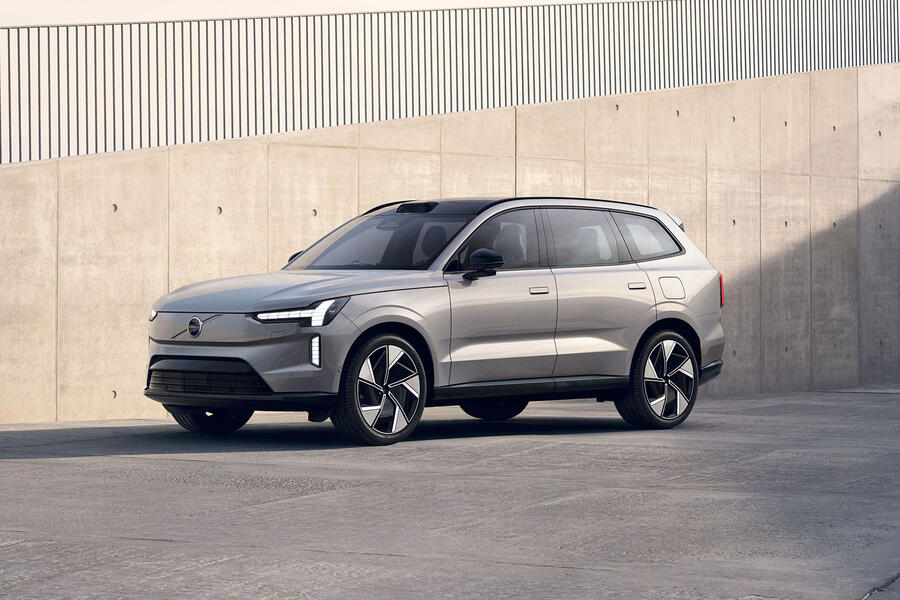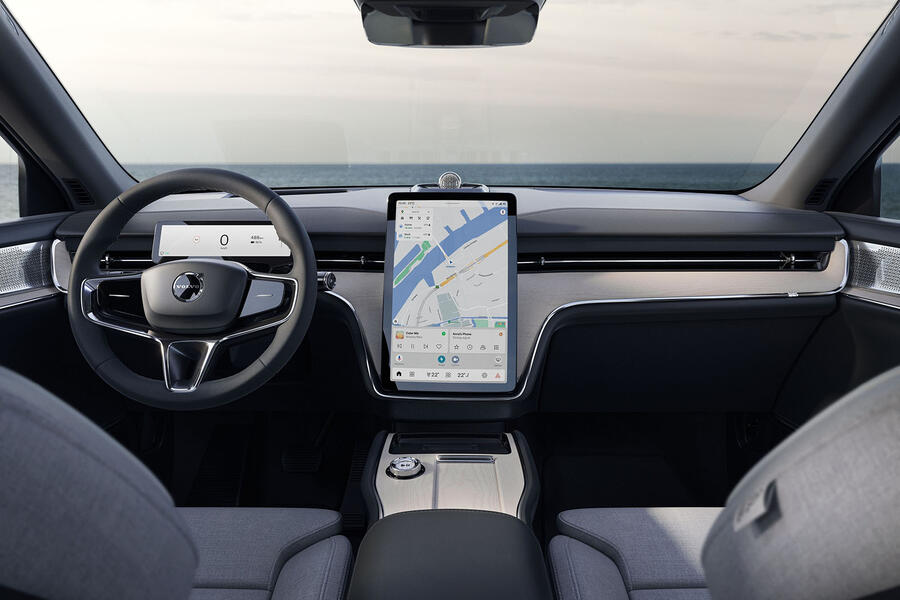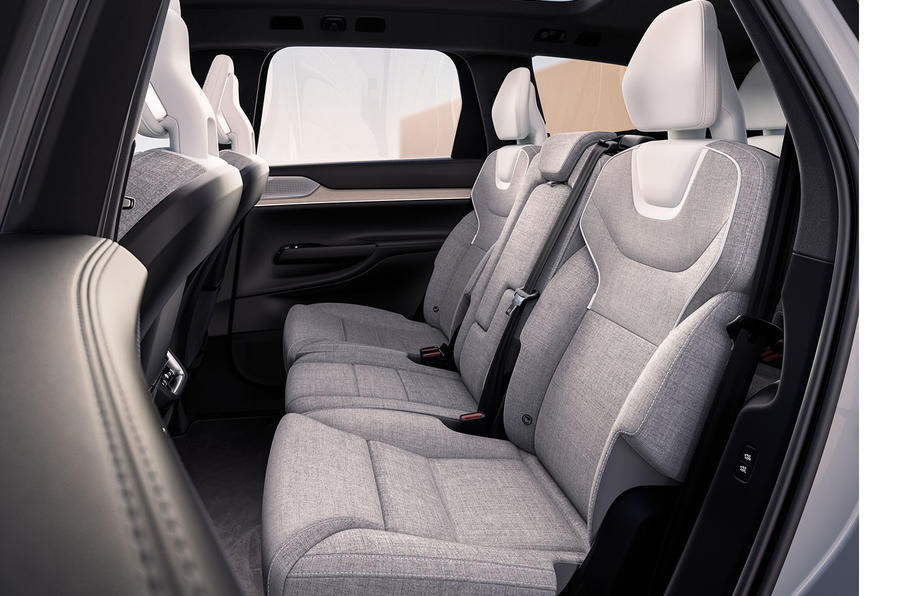Volvo has confirmed it will delay the start of production for its electric-powered EX90 SUV to allow extra time for software development and testing.
Originally due to begin production at Volvo's Ridgeville plant in the US and Chengdu plant in China during the fourth quarter of 2023, the new model is now “expected to see production during the first half of 2024”.
Volvo is not putting an exact time frame on when UK deliveries of the EX90 are now planned to begin. However, they claim demand for the BMW iX, Audi Q8 E-tron, and Mercedes-Benz EQE SUV rival has exceeded expectations since it was unveiled in November 2022.
Volvo revealed it closed orders for the electric-powered EX90 late last month, saying its first-year production quota had sold out. Early customers will now be forced to wait even longer for the range-topping Volvo model, which is based on the Swedish automaker's Scalable Product Architecture (SPA) platform.
No details have been given as to the nature of the software development and testing issues.

The EX90 – serving as a “statement for where we are and where we're going” – is claimed by Volvo CEO Jim Rowan to set new standards for safety as Volvo aims for zero crash fatalities in its cars.
The new machine is effectively an electric-only equivalent of the current Volvo XC90. It's the third electric Volvo, following the Volvo XC40 Recharge and Volvo C40 Recharge, but the first to sit on a dedicated electric platform – the Geely group’s advanced SPA2 architecture. It's closely related technically to the Polestar 3 but, unlike that model, features a third row of seats.
The EX90's styling is based on the Concept Recharge that was shown in 2021. It retains familiar Volvo design cues, such as the blanked-off front grille seen on the XC40 and the upright rear lights. It has also been honed for aerodynamic efficiency to optimise the range. Volvo claims a drag coefficient of 0.29.
It will arrive with a dual-motor, four-wheel-drive powertrain offering two outputs. Twin Motor models will have 402bhp and 568lb ft of torque, while Performance models will have 510bhp and 671lb ft. Both offer a governed top speed of 112mph.
Lower-powered single-motor versions are likely to follow.

Power will come from a 111kWh battery (107kWh usable), with an efficiency of 2.9 miles per kWh and a claimed range of 364 miles for the Twin Motor and 360 miles for the Performance. The battery can be charged at rates of up to 250kW, offering a 10-80% charge in 30 minutes.
At 5037mm, the EX90 is slightly longer than the current XC90. It’s also wider than that car but slightly lower and has a kerb weight of 2818kg.
There’s a 310-litre boot when seven seats are in use, which rises to 665 litres in five-seat mode and 1915 litres with both rows folded.
At launch, the EX90 will sit on 22in alloy wheels, with air suspension standard.
A major focus of the EX90 has been on the safety features, software and hardware that underpins the machine. Most notably, it will feature lidar as standard (this will be an option on the Polestar 3), with the sensor mounted on the front edge of the roof. That will complement a range of other interior and exterior sensors and cameras to power advanced driver assistance and safety systems.

Initially, that will include an upgraded Pilot Assist system, and a steering support function that will help changing lanes. Volvo says the systems will eventually it to offer an over-the-air subscription update that will offer “unsupervised autonomous driving” in certain conditions and places. The interior sensors can gauge eye concentration to warn about driving while distracted or drowsy.
The new safety kit, along with the EX90’s infotainment and battery management systems, will be powered by a core software system that uses advanced Nvidia Drive platforms along with Qualcomm’s Snapdragon Cockpit platform mixed with in-house Volvo software.
The interior dashboard is built around a 14.5in central touchscreen that features Volvo’s Google-based infotainment. The model features a 5G data connection as standard to aid with over-the-air software updates.
Only the range-topping Ultra trim level will initially be offered, which includes the lidar, a driver monitoring system, a panoramic glass roof and a 25-speaker Bowers & Wilkins audio system featuring Dolby Atmos.
The interior is finished in Nordico upholstery, a textile made from recycled materials including PET bottles and corks. There’s also four-zone climate control, and a three-year Care Offer package that includes three years of servicing.

Owners will be able to use their smartphone as a key for the car, with the firm’s app also designed to give access to an ‘ecosystem’ of services, including public charging stations and smart home charging management. The EX90 will support ‘Plug and Charge’, which, when launched, will automatically start charging the machine and sort payment when it is plugged into a compatible charger.
The EX90 will also support bi-directional charging, allowing it to send power to a home through a bi-directional wall box. That service will initially be offered in select markets.
The interior also features extensive use of natural and “responsible-sourced” materials. Overall, Volvo says that the EX90 contains 15% recycled steel and 25% recycled aluminium, along with around 48kg of recycled plastics and bio-based material – about 15% of the total plastic used in the car.
Volvo has given indicative pricing for the EX90 for when customer deliveries begin. The EX90 Twin Motor Ultra will start at £96,255, with a fixed Care by Volvo subscription costing from £1599 a month. The Twin Motor Performance Ultra will be priced at £100,555, or £1699 a month on subscription.
For comparison, the Polestar 3 is priced from £79,900, but that's for models without the lidar sensors that will be standard on launch EX90 models.
Volvo has committed to becoming an electric-only brand by 2030 and plans to launch one new fully electric car each year in the build-up to that. The EX90 is the first in that launch plan.
The firm hasn’t confirmed which model will follow the EX90 and EX30, but an electric equivalent of the current XC60 is also likely to be a priority.
Additional reporting by Greg Kable